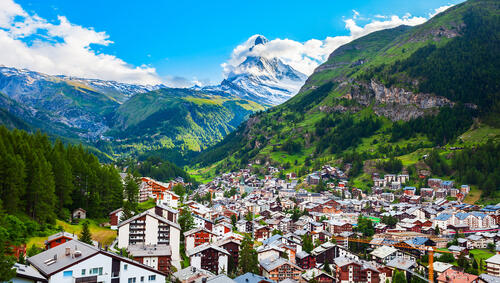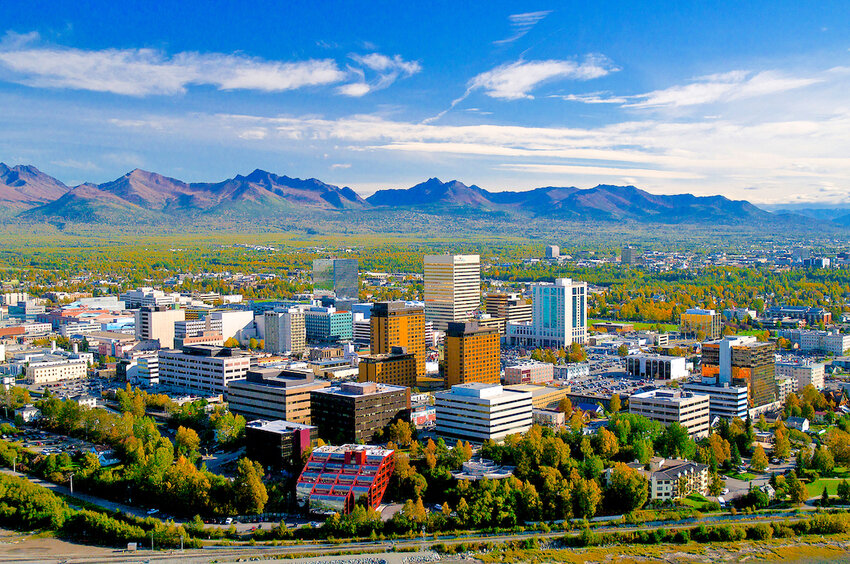It's no coincidence that the most expensive cities in the country are also some of the most frequently visited. Their high prices are a reflection of all they offer — some are scenic seaside escapes, while others are bustling cities full of endless opportunities.
These five most expensive cities were determined using the average cost of living, calculated by various price categories (housing, utilities, grocery items, transportation, health care, and miscellaneous goods and services). The Council for Community and Economic Research keeps track of the cost of living in over 270 urban areas around the country. As of early 2023, these are the top five most expensive cities on the list. For reference, the average cost of living is adjusted to an index of 100. All of these cities surpass the national average by at least 50%.
5. Orange County, California
Cost of living index: 150.3 out of 100

Anaheim, Santa Ana, and Irvine are clumped together into one coastal metropolitan area called the OC, whose popularity is obvious due to its three million residents and 50 million annual tourists. People from all walks of life call Orange County home, from Fortune 500 magnates to Hollywood stars, students and surfers.
Located just south of Los Angeles, the OC boasts some of California's top tourist attractions, including Disneyland Park (Disney’s first theme park), the Angel Stadium of Anaheim (home to the Los Angeles Angels MLB team), and Newport Beach, often ranked among the top U.S. beaches. All of these memorable experiences do come at a steep price. The cost of living here is well over the national average — consumers will pay 50.3% more for goods in Orange County. This means that a post-surf breakfast, a seaside shopping spree, and even filling up on gas will be noticeably more expensive than in most cities.
4. Brooklyn, New York
Cost of living index: 159.1 out of 100

“No sleep ‘til Brooklyn!” And no discounts, either. Brooklyn is home to around 2.7 million residents and has steadily grown more (economically) than any other New York City borough during the past few years, especially in the tech sector. Brooklyn is also an international melting pot — over one-third of its residents were born in another country, and over 200 different languages are spoken here, offering an array of multi-cultural experiences. This growth doesn't come without rising costs. Nearly one-third of renters spend over half of their income on rent in Brooklyn, and on average, consumers will pay 59.1% more for goods than they would in other American cities.
Looking for some inexpensive activities in Brooklyn? The 100-year-old Botanical Garden spans 52 acres and admission doesn’t break the bank. To sample a variety of treats from cuisines around the world, head to Dekalb Market Hall to try food from over 40 vendors, all housed in an industrial, underground space. There are plenty of no-cost activities, too. It’s free to walk the boardwalk nearby at Coney Island, or spend a quintessential New York afternoon strolling through Brooklyn Bridge Park for scenic views of the Manhattan skyline.
3. San Francisco, California
Cost of living index: 169.9 out of 100

This city by the bay pays 69.9% more for consumer goods on average. According to new 2023 reports, San Francisco is also the second -most expensive city to purchase a home, with a median monthly housing cost of $2,337 and a median home value estimate of $1,400,000. It’s also the second-most expensive U.S. city to buy groceries. So why is it still so popular? As the cultural hub of Northern California, there is an endless amount of things to do and see. Coupled with constant economic growth, it’s no wonder that new residents and visitors arrive every day.
Enjoy an unforgettable dining experience at one of San Francisco’s 32 Michelin-starred restaurants. Looking for the best of the best? Benu (Asian cuisine), Quince (Contemporary), and Atelier Crenn (Contemporary) all boast three Michelin stars (and hefty price tags). Not everything is as costly in San Francisco. For unmatched views of the Golden Gate Bridge, take a hike up to Hawk Hill (no admission fee). The 1,000-acre Golden Gate Park is also free, with parks, meadows, recreational fields, and museums (which do charge admission).
2. Honolulu, Hawaii
Cost of living index: 179.0 out of 100

Almond milk drinkers beware: Honolulu is the most expensive city in the U.S. to purchase this plant-based drink, costing around $5.42 per unit. Beverages aside, Honolulu is also the second-most expensive city in the U.S. in terms of cost of living as a whole, with locals and tourists paying 79% more for goods and services than they would in other cities. Because Honolulu is Hawaii’s state capital — and it’s located on the state’s most-visited island (Oahu) — there is a constant surge of activity in this seaside retreat.
Some of Hawaii’s most expensive and luxurious hotels are located at Waikiki Beach, a palm tree-lined neighborhood known for its bustling nightlife, shopping, pristine beaches, and fine dining. Not all Honolulu cuisine is expensive, though. Try eclectic food at Chinatown, fish tacos at a beachside stand, or a traditional frozen treat, Hawaiian shave ice.
1. Manhattan, New York
Cost of living index: 222.0 out of 100

By far, Manhattan is the most expensive place in the country. Consumers spend over twice as much — 122% — on goods, services, and housing than in any other U.S. city. But plenty of Manhattanites will say the price is worth it to live in this bustling city. There is no city on Earth like it, which is why over 60 million tourists will visit New York City this year.
From the glimmering lights of Broadway marquees to the hallowed steps of the Metropolitan Museum of Art, Manhattan attractions beckon sightseers to come in for a visit. Among the most expensive luxury experiences are helicopter tours with unforgettable skyline views, behind-the-scenes Broadway passes, private museum tours, and Michelin-rated dining (with over 70 options). Just how pricey can staying in New York City get? Known as one of the most prestigious hotels in the city, the Mark Hotel’s Penthouse Suite runs guests $75,000 a night, and has hosted celebrities like Oprah, Anna Wintour, and Marc Jacobs. This is far less than the overall average hotel cost in New York City, which was around $235/night in 2022.





